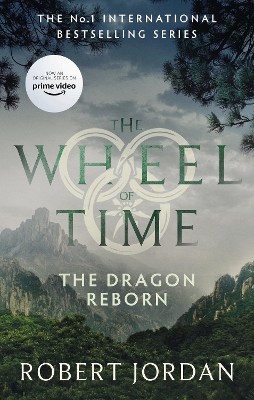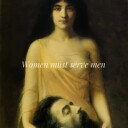
thepunktheory
Okay guys, I’m going to start this review off with a tangent literally nobody needs. Remember how in the last post I talked about Lord of the Rings and its influence...Read more
Okay guys, I’m going to start this review off with a tangent literally nobody needs. Remember how in the last post I talked about Lord of the Rings and its influence on Wheel of Time? I also mentioned that the further I got in the last novel, the less it felt LOTR-sy. Well, after this novel, it feels like something else. Like the Arthurian legends to be precise. I am not all too familiar with those, but there were *a lot* of things in this book that reminded me of them. I mean, just look at all the names – seriously, how did I not notice that before:
Egwene al’Vere – Guinevere (Arthur’s love interest, Rand’s initial love interest)
Moiraine – Morgan le Fay (sometimes also spelled Morgaine, a powerful enchantress)
Perrin – Percival/Peredur (come on, that name is similar to Perrin!)
Thom Merrilin – Merlin (wizened old mentor to Rand/Arthur)
Artur Paendrag Tanreall known as Artur Hawkwing – Arthur Pendragon (both united Kingdoms)
Caemlyn – Camelot
Tar valon -Avalon
Elayne – The Lady of Shalott (I don’t mean this as in their stories are the same [though, who knows. I have another 11 books to go, a lot can happen], but the Lady of Shalott is actually also named Elayne)
Galad – Galahad, sometimes also spelled as Galath (Galahad is said to be the most perfect of knights – which is kinda how Galad is described a lot)
Mordeth – Mordred (Mordred is instrumental in Arthur’s downfall, Mordeth is a dark character who so far has brought nothing but trouble)
Gawyn – Gawain (powerful knight)
Lan – Lancelot (unrivalled swordsman)
Sword in the stone (well circle back to that in a bit!)
Nyneave – Nimue, sometimes also spelled Ninieve or variations thereof
Queen Morgase – Morgause (a Queen as well)
Those are two many things just to be coincidence. And as I said, I don’t even know much about Arthurian legends, so I bet there’s a lot more in the Wheel of Time books than I managed to spot. I’m actually going to get into the review of the novel now, so spoilers ahead!
I’ve talked about this before, but Jordan throws a lot of stuff at the reader that does not get properly explained. You do, however, always get the distinct impression that this is on purpose, that we will learn about this later in the story. Well, we’ve reached a point where I’m slightly annoyed because I’m just itching for more information. And there is a thing or two where I’m not actually sure that we will get back to that any time. So, is there really logic behind everything? Did Jordan just happen to forget to mention a thing or two?
Mainly what I wanted to cover with that is first of all, how did Moiraine and Lan get into the Stone of Tear? I don’t recall that being mentioned at all. Sure, Lan might have scaled one of the walls or something, but what about Moiraine? Well, maybe they’ll have a little chat about it in the next book. There sure are a lot of things to discuss in the aftermath of this. For example, Mat is on a mission to save Elayne (and the Nyneave and Egwene), now that he has learned about the plot to have them murdered. This seems rather significant, you know. Something you might mention quickly? The book is over and as far as I can tell, Elayne hasn’t been informed about it yet. Again, maybe we’ll cover it early in the next novel.
I’d also like to know a lot more about Mat’s luck and how that works. But this definitely feels like Jordan is being deliberately obtuse. Like, this will for sure come back later to be addressed.
As much as I liked having Thom back in the story, somehow his reasons for doing things seem to get a lot flimsier. I assume there is some grander purpose down the line and that’s why Thom needs to be part of the story now. Otherwise, I really wouldn’t know why he’s tagging along now. Or maybe I just need to have his inner thoughts worked out a bit more.
I’ve talked about the inspirations Robert Jordan (probably) drew from Arthurian legends above, but let’s spend a minute to tackle the most obvious one: the sword in the stone. I’m sure you all know the story, the sword Excalibur is stuck in the stone, only the one true king can pull it out. In this novel, Rand has to go to Tear, to the fortress called the Stone, to get the sword Callandor which only the true dragon reborn is supposedly able to take. This was such a cool nod to mythology; Jordan did a great job with that.
Rand as a character is becoming more irritating as time goes by, but this goes with the story and his (I would assume) slow descent into madness. However, we don’t spend that much time with him alone. In fact, in this novel, it feels like we get into the heads of other characters a lot more than in previous ones. I really can’t tell if it just seems like it or if it is actually the case. It might just feel more intense as everybody is coming into their own a lot more, learning about their abilities, becoming more badass as they go.
What Jordan did an amazing job with is weaving the story back together. Ways may part at some point, but all roads lead to Rome – or in this case Tear. It never feels too forced that everybody ends up in the same place, more like the Wheel weaves as the Wheel wills.

